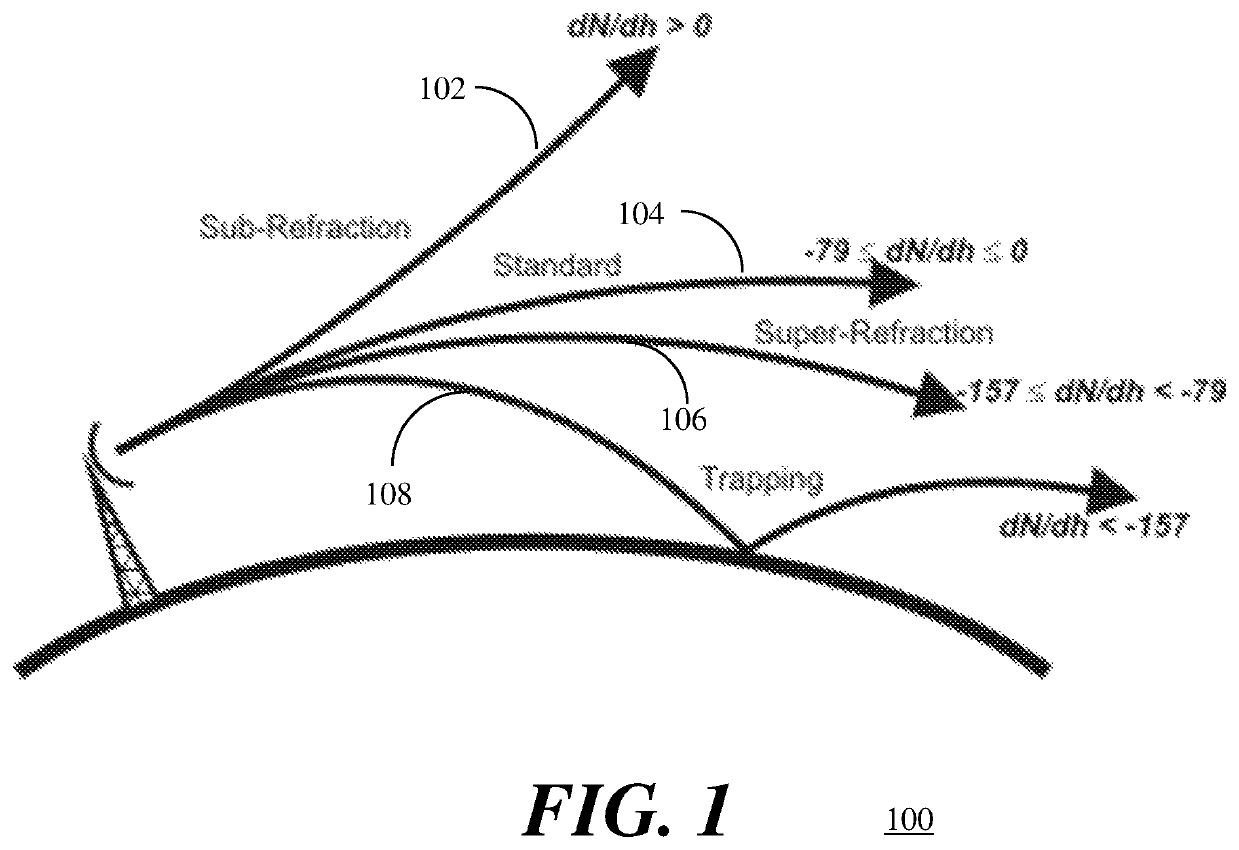Trans-horizon wireless communication system using the tropospheric evaporation duct
a wireless communication and tropospheric evaporation technology, applied in the field of wireless communication methods and systems, can solve the problems of insufficient infrastructure, inability to extend trans-horizon wireless communication beyond line-of-sight (los), and inability to meet the needs of trans-horizon wireless communication, etc., to achieve high availability and/or capacity.
- Summary
- Abstract
- Description
- Claims
- Application Information
AI Technical Summary
Benefits of technology
Problems solved by technology
Method used
Image
Examples
Embodiment Construction
[0028]The following detailed description is merely exemplary in nature and is not intended to limit the invention or the application and uses of the invention. Furthermore, there is no intention to be bound by any theory presented in the preceding background of the invention or the following detailed description. It is the intent of the present embodiment to present a reliable wireless communication system for trans-horizon communication over the sea using the tropospheric evaporation duct.
[0029]Referring to FIG. 1, an illustration 100 depicts four refractive conditions which depend upon refractive gradients. In standard conditions 102, the gradient of refractivity varies from 0 to −79 N-units per km. When the refractivity gradient varies from −79 to −157 N-units per km, a super-refraction condition 104 occurs in the troposphere and the ray will refract downwards at a rate greater than standard but less than the curvature of earth. If the refractivity gradient is greater than 0 N-un...
PUM
 Login to View More
Login to View More Abstract
Description
Claims
Application Information
 Login to View More
Login to View More - R&D
- Intellectual Property
- Life Sciences
- Materials
- Tech Scout
- Unparalleled Data Quality
- Higher Quality Content
- 60% Fewer Hallucinations
Browse by: Latest US Patents, China's latest patents, Technical Efficacy Thesaurus, Application Domain, Technology Topic, Popular Technical Reports.
© 2025 PatSnap. All rights reserved.Legal|Privacy policy|Modern Slavery Act Transparency Statement|Sitemap|About US| Contact US: help@patsnap.com



